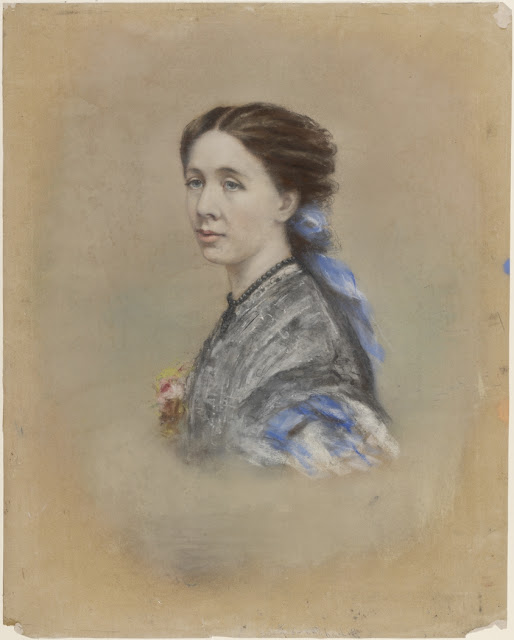Intelligentsia: Blanche Mitchell, daughter of explorer Sir Thomas Mitchell. Her letters and diaries provide a picture of the life of the small Darling Point intellectual elite including the Boultons. This is the fifth in a series on the lives of English children's writer Arthur Ransome and his Australian connections.
On 25 August 1852,
Edward Baker Boulton (EBB) and wife Mary sailed for Australia accompanied by
the two children born while the family had been living in England, Emily (1851)
and Edward Oswald (1852).
EBB was now a member
of the Darling Point intellectual elite whose members included Charles
Nicholson and Robert Lowe, later Viscount Sherbrooke.
The family settled
back happily into Darling Point life with its mixture of literary and artistic
endeavour, intellectual discussion, balls, picnics and other social outings. Five
additional children were born during this Sydney period.
We know as much as we
do of this period because of the letters of Blanche Mitchell, the daughter of
surveyor and explorer Sir Thomas Mitchell. Mitchell’s death in 1855 had left
his family in some financial difficulty. Blanche seems to have been accepted as
part of the Boulton family group and described their activities in her
letters.
The Boulton brothers
seem to have purchased Bergen op Zoom
station outside Walcha soon after Edward’s return, for in August 1853 EBB
mortgaged Bergen op Zoom plus other
assets to raise the then large sum of
£5,900.
In 1855, EBB entered
into a partnership with David Bell that would last until 1876. Bell, who seems
to have lived on and controlled the actual management of Bergen op Zoom, would become a very successful pastoralist, buying Muluerindie station in 1873 then Rimbanda station in 1875.
Despite his growing
success and the attractions of Sydney life, EBB missed England and Europe. On
18 May 1859, the family sailed for England on the SS Camperdown.
While advertised as a
fine ship, it was a bad trip especially for Mary who was pregnant again. In
December 1859 Mary died at her parent’s place in Ireland, probably from complications
associated with the birth of her new daughter, also named Mary.
Following Mary’s
death, EBB moved his large brood back to his English home area, installing them
in Tilley House near Wem. There on 6 June 1861 he married Rachel Gwynn. Over the
next ten years they would have another ten children, making for a very large
brood indeed!
Edith, their first
child, has already appeared in our story. An accomplished artist, she was to be
the mother of writer Arthur Ransome and EBB’s confidant when it came to the
painting they both loved.
During this English
period, EBB pursued his artistic endeavours both painting and exhibiting. The
family itself lived in some style. The 1871 census shows that they had seven
servants including a governess and two nurses. I think the last three were
badly needed!
I suspect that EBB
might have stayed in England. However, events now intervened that required his
return to Australia and to Walcha.
Note to readers: This post appeared as a column in the Armidale Express Extra on 19 February 2020. I am repeating the columns here with a lag because they are not all on line outside subscription. You can see all the Belshaw World and History Revisited/History Matters columns by clicking here for 2009, here for 2010, here for 2011, here for 2012, here for 2013, here for 2014, here for 2015, here for 2016, here 2017, here 2018, here 2019, here 2020












